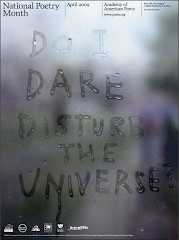The 3 reasons to read Virginia Woolf's Mrs. Dalloway:
1) Woolf allows her readers into the heads of multiple characters in the novel at the same time, and this is something that novels can lack at times. I don't just want to know what's going on in the head of the protagonist. What about her best friend? Her lover? Her enemy? Her mother? This term that I have deemed "multiple consciousnesses" is definitely one reason why I think it's important to read Mrs. Dalloway.
2) I am stealing this one from Ann Page's list...Ecstasy of the moment. I have never seen a writer pay tribute to acts that seem so trivial in life. For Woolf, every action is a work of art, and that is the same attitude that Clarissa has in the novel. Making a moment seem so spectacular can often be difficult to sum up in words. Woolf has no problem with this task.
3) Woolf teaches her readers to read carefully, not just carefully, but with extreme precision. Every word seems to be chosen for a specific reason, and as an English major, I respect her ability to create such a dense piece of literature.
The 3 Reasons to Read Michael Cunningham's The Hours:
1) To me, Cunningham's novel is the epitome of intertexuality. In order to create a definition of the term "intertexuality," I think it's important to use The Hours as an example. I have never really understood the term until now.
2) The message. Again, I couldn't help but feel elated when I read the final pages of the novel. This is how life is. It's made up of struggles, torment, and hardship, but we live for those few hours that make us feel like we are bursting with energy and happiness. I can relate to the message, especially right now, in my college years.
3) Dedication to characters. The progressions of the three women's attitudes are believable. I was shocked that he was able to cram in so much character development into 226 pages. My creative works are extremely character-driven, so I can look to Cunningham's novel as a source of believable development.
The 3 Reasons to Read Mrs. Dalloway before The Hours:
1) All three of the women (especially Clarissa's character) would not seem as deep and complex if an individual read The Hours without having any knowledge of Mrs. Dalloway. Mrs. Dalloway, the character came first. Clarissa Vaughan came next. It seems like a logical way of being introduced to the two literary characters.
2) Due to the difficulties that arise over reading Mrs. Dalloway, I think it is important to read that text first, so that The Hours can supplement the former of the texts. I don't think Mrs. Dalloway could serve as a supplement for The Hours. The Hours can be used as a plot tool to supplement what is occuring in Mrs. Dalloway.
3) Virginia Woolf's motifs can be appreciated further in The Hours (flowers, birds, clocks/time, etc.) if an individual reads Mrs. Dalloway first. If a person were to read Woolf after Cunningham, he or she might not remember and appreciate the subtle references to these motifs in The Hours.
-Megan R.
Subscribe to:
Post Comments (Atom)













Megan,
ReplyDeleteI definitely agree with your Virginia Woolf #1. I think that her ability to get inside people and really understand them is one of the things that does make "Mrs. Dallway" accessable. And although it is something that creates a connection between the characters and the reader (and the writer and the reader), it is also part of what is so initmidating about her.
I think you're right, too, to point out that the message in "The Hours" is really powerful. That's not to say that the message in "Mrs. Dalloway" isn't... but I think that Cunningham's message is somehow easier to relate to (even though I might also argue that it's the same message in both texts). I guess that Woolf's message seems a bit clouded; it's less clearly positive and/or optimistic, but that may also be because we have knowledge of her own life and her suicide.
And, we already know we agree on which order to read them in and why... :)
Abby
Your third reason for reading Mrs. Dalloway first is dead on - I found myself referring back to Mrs. Dalloway every time I saw Cunningham's use of birds, flowers, water, etc. I got pretty excited and felt myself thinking, "Oh!! I know where he got that from!!" It was like being let in on a private conversation between Cunningham and Woolf - I love how closely he paid attention to Woolf's deliberate inclusion of certain symbols.
ReplyDelete